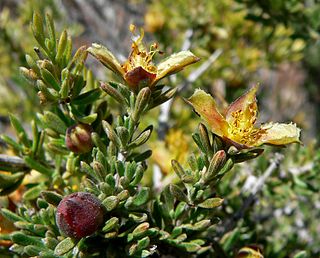
Lavandula is a genus of 47 known species of flowering plants in the mint family, Lamiaceae. It is native to the Old World and is found from Cape Verde and the Canary Islands, Europe across to northern and eastern Africa, the Mediterranean, southwest Asia to southeast India. Many members of the genus are cultivated extensively in temperate climates as ornamental plants for garden and landscape use, for use as culinary herbs, and also commercially for the extraction of essential oils. The most widely cultivated species, Lavandula angustifolia, is often referred to as lavender, and there is a color named for the shade of the flowers of this species. Despite its use over centuries in traditional medicine and cosmetics, there is no high-quality clinical evidence that lavender has any effects on diseases or improves health.

Lavandula stoechas, the Spanish lavender or topped lavender (U.S.) or French lavender (U.K.), is a species of flowering plant in the family Lamiaceae, occurring natively in several Mediterranean countries, including France, Spain, Portugal, Italy and Greece.

Lavandula angustifolia, formerly L. officinalis, is a flowering plant in the family Lamiaceae, native to the Mediterranean.

Galearis spectabilis is an orchid species of the genus Galearis. It is native to eastern Canada and much of the eastern half of the United States.

Rosa gymnocarpa is a species of rose native to western North America. It is known by the common names dwarf rose, baldhip rose, and wood rose. It grows in shady, damp, and rich forests.

Coleogyne ramosissima or blackbrush, is a low lying, dark grayish-green, aromatic, spiny, perennial, soft wooded shrub, native to the deserts of the southwestern United States. It is called blackbrush because the gray branches darken when wet by rains. It is in the rose family (Rosaceae), and is the only species in the monotypic genus Coleogyne.

Clarkia imbricata is a rare species of flowering plant in the evening primrose family known by the common name Vine Hill clarkia. It is endemic to Sonoma County, California, where it is known from only one remaining natural occurrence near Vine Hill. A second natural population located on private land was extirpated when the owners plowed up the soil crust. The California Native Plant Society has established a third population from cuttings and is tending it in a reserve. This is a federally listed endangered species.
Triteleia dudleyi is a species of flowering plant known by the common name Dudley's triteleia. It is endemic to California, where it is known from sections of the High Sierra Nevada and the Transverse Ranges. It is a plant of subalpine climates, growing in mountain forests. It is a perennial herb growing from a corm. It produces two or three basal leaves up to 30 centimeters long by one wide. The inflorescence arises on an erect stem up to 30 or 35 centimeters tall and bears an umbel-like cluster of many flowers. Each flower is a funnel-shaped yellow bloom that dries purple. The flower has six lobes measuring up to 1.2 centimeters long. There are six stamens with lavender anthers.

Calylophus serrulatus is a species of flowering plant in the Onagraceae known by the common name yellow sundrops. Other common names include halfshrub sundrop, serrate-leaved evening primrose, shrubby evening primrose, plains yellow primrose, and halfleaf sundrop. It is native to central North America, including central Canada and the central United States.

Gaillardia pinnatifida, the Hopi blanketflower or red dome blanketflower, is a perennial plant in the sunflower family (Asteraceae) found in northern Mexico and in the south-central and southwestern United States.
Astragalus flavus is a perennial plant in the legume family (Fabaceae) found in the Colorado Plateau and Canyonlands region of the southwestern United States.
Platanthera zothecina is a perennial plant in the orchid family (Orchidaceae) found in the Colorado Plateau and Canyonlands region of the southwestern United States.

Lupinus pusillus, the rusty lupine or dwarf lupine, is an annual plant in the legume family (fabaceae) found in the Colorado Plateau and Canyonlands region of the southwestern United States, and north to Montana.
Sophora stenophylla, the fringeleaf necklacepod, or silvery sophora, is a perennial plant in the legume family (Fabaceae) found in the Colorado Plateau and Canyonlands region of the southwestern United States.

Penstemon comarrhenus is a perennial plant in the plantain family (Plantaginaceae) found in the Colorado Plateau and Canyonlands region of the southwestern United States.

Penstemon cyanocaulis, the bluestem penstemon or bluestem beardtongue, is a perennial plant in the plantain family (Plantaginaceae) found in the Colorado Plateau and Canyonlands region of the southwestern United States.
Aliciella subnuda is a biennial or perennial plant in the phlox family (Polemoniaceae) found in the Colorado Plateau and Canyonlands region of the southwestern United States.
Primula specuicola is perennial plant in the primrose family (Primulaceae) found in the Colorado Plateau and Canyonlands region of the southwestern United States.

Astragalus desperatus is a perennial plant in the legume family (Fabaceae) found in the Colorado Plateau and Canyonlands region of the southwestern United States.

Oenothera suffulta, known as roadside gaura, honeysuckle gaura, or kisses, is a flowering plant in the primrose family, Onagraceae. It is endemic to the United States, in Texas and southern Oklahoma.














